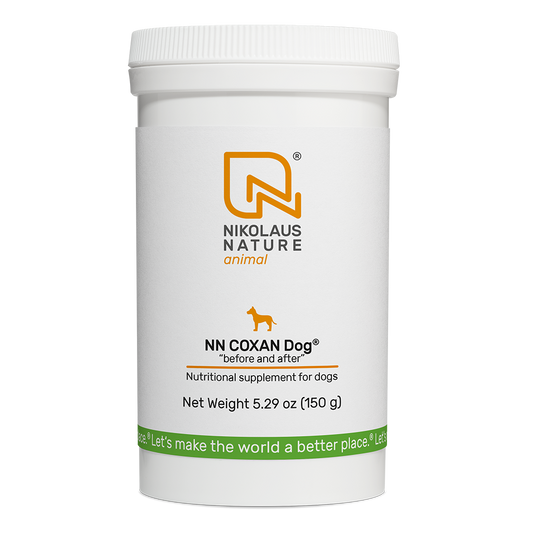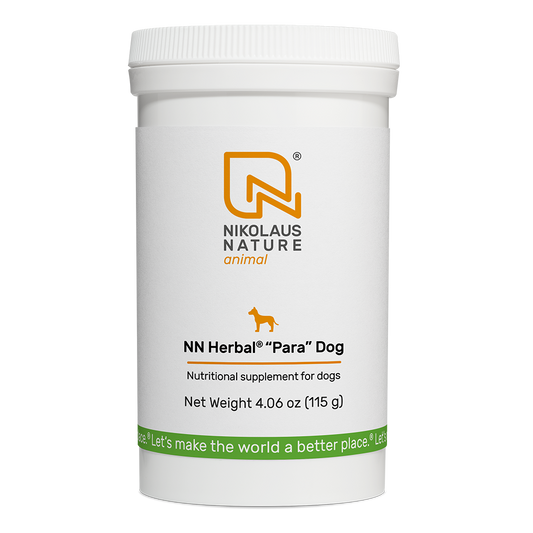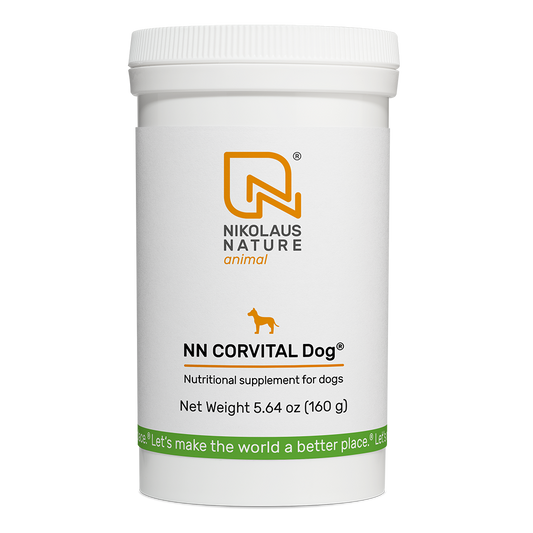Acid Reflux in Dogs
Just as humans can get the occasional acid reflux, so can our canine companions. This uncomfortable disorder can lead to undesirable symptoms like regurgitation, decreased appetite and lip licking. If you feel your pet may be experiencing acid reflux, be sure to consult with your veterinarian in order to get them relief as soon as possible.

What is Acid Reflux in Dogs?
Acid reflux, also known as gastroesophageal reflux disease (GERD) is a condition in which the contents of the stomach move retrospectively back up into the esophagus or even mouth, including gas, liquid or solid contents. This can be extremely nauseating and uncomfortable for effected dogs as the stomach acid is caustic to the esophagus and oral cavity. Effective management strategies vary based on underlying cause and severity.
What are the symptoms of acid reflux in dogs?
Acid reflux is associated with many uncomfortable clinical signs. From regurgitation to bad breath and pain, even if the underlying cause can’t be directly resolved, the focus of treatment is to manage these symptoms. Symptoms of acid reflux can include:
-
Regurgitation:
This is the most common sign of acid reflux. Regurgitation is the passive movement of solid or liquid contents from the stomach back up into the mouth and may be accompanied with a burp. Regurgitation can be distinguished from vomiting as vomiting is an active process where patients typically heave a few times prior to stomach contents coming back up.
-
Nausea and Vomiting:
While regurgitation is more of a telltale sign of acid reflux than vomiting, vomiting and nausea are also common side effects. Whether from acid buildup or GERD, patients can experience nausea ranging from drooling to a decreased appetite, to actual vomiting.
-
Pain:
It is not uncommon for dogs with acid reflux to experience abdominal discomfort. This may be noted by an owner when they pick up their small dog or by a veterinarian during abdominal palpation on a physical exam.
-
Halitosis or bad breath:
Just as humans can experience acid reflux and end up tasting stomach acid or the aftermath of their last meal, the same goes for dogs. Owners may note a bad odor from the mouth after an episode of reflux.
-
Frequent swallowing or gulping:
While regurgitation is a common symptom of GERD, some dogs will swallow stomach contents back down rather than spitting it out. What owners may notice is frequent swallowing or gulping.
-
Lip licking:
In line with frequent swallowing, comes lip licking. A small bit of the stomach contents that reflux up can coat the inside of the oral cavity and lips, leading to excessive lip licking. Lip licking can also be a sign of nausea.
-
Weight loss:
Weight loss can occur in acid reflux patients due to lack of appetite or due to lack of nutrients from vomiting and regurgitation of food eaten.
-
Decreased appetite:
Many patients with acid reflux experience a lack of appetite due to nausea or an association between eating and subsequent vomiting or regurgitation.
-
Restlessness:
Some dogs may experience abdominal pain or nausea to the point where they have trouble getting and staying comfortable. Owners may notice their dog pacing more than usual or seeming restless.
-
Cough:
During an episode of regurgitation, some of the stomach contents that slip back up the esophagus can slip into the windpipe, causing irritation that results in cough. This is known as aspiration.
-
Aspiration pneumonia:
As mentioned above, sometimes during regurgitation, some of the stomach contents can slip into the windpipe. This can result in intense inflammation and even secondary infection within the lungs, known as aspiration pneumonia.
What causes acid reflux?
There are many potential causes of acid reflux, some congenital, some acquired. Sometimes multiples of these issues can be going on simultaneously. Some of the possible causes of acid reflux in dogs include:
-
Hiatal hernia:
A hiatal hernia is when the upper part of the stomach comes up into the chest cavity through the opening in the diaphragm through which the esophagus comes through. This is typically a congenital issue but can be caused by trauma. Hiatal hernias are common in brachycephalic breeds due to increased negative pressure within their chest cavity. A hiatal hernia can be difficult to diagnose as it can be “sliding”, meaning they come and go from normal position. This disorder often requires surgical correction for complete resolution of symptoms.
-
Delayed stomach emptying:
Whether caused by inadequate nerve input, or a narrowed or dysfunctional pylorus (sphincter that empties the stomach), if the stomach is not emptying at a normal rate, reflux may result.
-
Problematic foods:
Certain foods, such as excessively spicy or fatty foods can lead to an increase in stomach acid and consequently, acid reflux.
-
Digestive Tract Inflammation:
When the stomach is inflamed, it is prone to purging and not appropriately digesting its contents, resulting in reflux and nausea. Stomach inflammation can be caused by a variety of disorders, or even food sensitivities.
-
Impaired nerve input to sphincters:
If the nerve input to the lower esophageal sphincter is impaired, the sphincter may sit in a more open position than normal which can allow gastric contents to flow retrospectively back up the esophagus.
-
Microbiome imbalance:
Overgrowth of certain bacteria, such as Helicobacter can result in increased acid production and therefore acid reflux.
-
Nutrient deficiencies:
Deficiencies in certain nutrients such as Vitamin D, Vitamin B12 and Calcium or Magnesium can result in a change in stomach acid production.
-
Underproduction or overproduction of stomach acid:
Abnormal stomach acid production can result in improper digestion of food and acid reflux.
-
Anesthesia:
A percentage of dogs experience regurgitation when under anesthesia due to a temporary decrease in tightness of the lower esophageal sphincter. This resolves once pets have woken up from anesthesia.
-
Megaesophagus:
Megaesophagus can be a congenital issue or can occur secondary to underlying tumors or autoimmune diseases. As the name suggests, with megaesophagus, the esophagus dilates considerably to the point where food swallowed sits in the esophagus rather than being pushed down into the stomach. This can lead to irritation of the esophagus and secondary reflux.
-
Chronic vomiting:
Patients experiencing chronic vomiting, such as those with pancreatitis or certain metabolic disorders often develop esophageal irritation from the stomach acid coming up into the esophagus.
Diagnosis of Acid Reflux
Acid reflux causes a myriad of uncomfortable symptoms, many of which can also be symptoms of other disorders. This speaks to the importance of proper diagnosis. There are many tools available to aid veterinarians in doing so:
-
X-rays/Fluoroscopy:
Xrays are the least invasive imaging modality that can be useful for diagnosing causes of acid reflux. Xrays can look at the shape, size and location of the stomach and esophagus to identify potential abnormalities. Fluoroscopy involves a real-time Xray machine that can be used to perform a swallow study. Patients are fed solids and liquids while this real-time Xray is performed to watch the way food travels down the esophagus into the stomach.
-
Endoscopy of the upper GI tract:
Endoscopy involves passing a small camera through the oral cavity down the esophagus and into stomach to look at this tissue lining the digestive tract. This can pick up on areas of inflammation or abnormal tissue. Endoscopy also allows for direct sampling of tissues for biopsy without the need for invasive surgery.
-
Medical history:
As with any diagnostic workup, a good medical history is of utmost importance. This involves a thorough list of all foods, treats, supplements and medications a patient has been on or is currently on, as well as getting a thorough list of symptoms the patient is experiencing to aid in proper diagnosis.
-
Blood tests:
Blood tests can be used alongside imaging to aid in diagnosis of an underlying cause for acid reflux. Blood tests can identify nutritional deficiencies, autoimmune diseases, and changes that can occur secondary to acid reflux.
Treating Acid Reflux in Dogs
Treatment of acid reflux in dogs varies depending on the underlying cause. Sometimes the underlying cause can be cured, while other times it cannot, and symptoms associated with the cause are just managed to the best of the veterinarian’s and pet parent’s abilities. Both surgical and medical treatments may be available to your pet:
-
Surgical treatment of acid reflux in dogs:
Surgical treatment is available for few underlying causes. Hiatal hernias can be surgically repaired and result in potential complete correction of acid reflux. If your dog has a GI tumor causing acid reflux, depending on the size and location they may be a surgical candidate as well.
-
Medical treatment of acid reflux in dogs:
Medical management of acid reflux varies based on underlying cause. Medicine may be required only temporarily, or in some cases, life-long. While some medications target the underlying cause of a disorder, others aim to control symptoms. A few common medications for reflux management include:
-
Antacids :
As acid overproduction is a common cause of acid reflux, antacids are at the frontline of medical management for this disorder. Famotidine and Omeprazole are both over the counter acid reducers that can dramatically improve quality of life for GERD patients.
-
Sucralfate :
Sucralfate is used in cases of gastric ulcers and esophagitis. When the inner surface of the stomach or esophagus is irritated or ulcerated, sucralfate binds to it, acting as a band-aid to promote healing and prevent additional injury.
-
Pro-motility drugs :
Metoclopramide and Cisapride are pro-motility medications commonly used in the chronic management of GERD. These drugs act by increasing motility within the stomach and intestines, leading to faster gastric emptying. Metoclopramide also tightens the lower esophageal sphincter, keeping it closed, thereby reducing reflux.
-
How do you treat acid reflux in dogs naturally?
Mild, transient cases of acid reflux may be amenable to natural remedies rather than surgery or medication.
-
Probiotics :
Probiotics can be used to promote a healthy gastrointestinal microbiome. This is especially important in cases where there is suspected overgrowth of bad bacteria within the gut or if symptoms started in association with antibiotic use. Probiotics can be found in foods like unflavored, low-fat yogurt or can be provided with supplements such as Fortiflora.
-
Diet :
In some cases, a bland diet or hydrolyzed protein diet can be beneficial in the management of acid reflux in patients with food sensitivities or stomach inflammation.
What should you feed a dog with acid reflux?
Dogs with acid reflux, especially if caused by megaesophagus, benefit from smaller more frequent meals. A bland and soft food diet fed in an upright position tends to stay down better in these patients.
Patients with food sensitivities should go through a trial with either a different protein source or a hydrolyzed protein source- this means the protein is mechanically broken down into the smallest components possible so your pet gets the nutrients they need without their body recognizing the protein as an allergen.

Managing Acid Reflux in Dogs
Managing dogs with acid reflux involves proper and timely diagnosis followed by appropriate intervention based on official underlying cause and severity. Mild cases of acid reflux may require little management and may even be transient. More severe cases with underlying causes like megaesophagus will require more intense and even lifelong management to maintain quality of life for both owner and patient.
Preventing Acid Reflux in Dogs
In some cases, managing underlying diseases such as megaesophagus or digestive tract inflammation early can maintain healthy esophagus and stomach function and prevent onset or continuation of acid reflux in dogs. The longer acid reflux goes on unmanaged, the worse the disease can become and the harder it is to get under control. Prompt intervention is essential.
Digestion and Acid Reflux in Dogs
Eating and digestion are essential daily functions. A healthy digestive tract is a necessity just as a healthy heart and lungs are. To many dogs, their daily meals are one of the most exciting parts of their day. To have this enjoyable experience diminished by symptoms such as nausea, regurgitation and abdominal pain is something no pet parent wants their pup to go through. If your dog is experiencing any of the above-mentioned symptoms that can be associated with acid reflux, it is important to consult with their veterinarian to get them relief quickly.
Resources
-
Esophageal reflux in dogs
(https://pubmed.ncbi.nlm.nih.gov/28233317/) -
Acid reflux and aspiration
(https://pubmed.ncbi.nlm.nih.gov/36655626/) -
Reflux associated with anesthesia
(https://pubmed.ncbi.nlm.nih.gov/8578660/) -
Esophagitis in dogs
(https://pubmed.ncbi.nlm.nih.gov/8578660/) -
Hiatal hernia and Fluoroscopy
(https://pubmed.ncbi.nlm.nih.gov/33687078/) -
Metoclopramide and Anesthesia
(https://pubmed.ncbi.nlm.nih.gov/16426208/) -
Megaesophagus in dogs
(https://www.ncbi.nlm.nih.gov/pmc/articles/PMC6451904/) -
Comparison of GERD in humans and dogs
(https://www.ncbi.nlm.nih.gov/pmc/articles/PMC9228035/)







